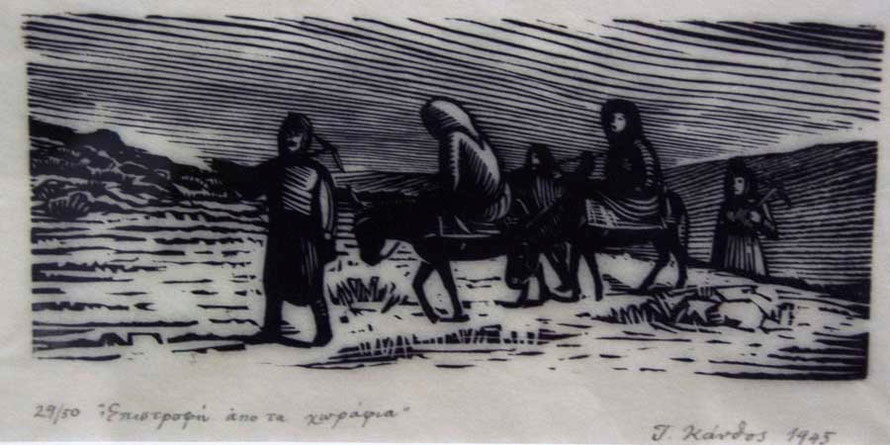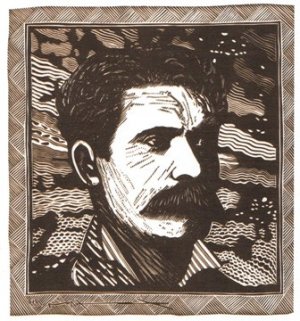Cyprus’ location in the Mediterranean led to many
cultures having its influences on Cypriot art. Art from the age of Antiquity is
mostly relegated to pieces of pottery and jugs and ceramics. These early styles were more typical of
the Middle East.
Then came the Greeks. Their influence oversaw many areas of art from architecture
to religious paintings. However,
more architecture influence came from French Gothic and Italian Renaissance
styles. Since Rome, and Italy on a whole, was a major cultural center of the
arts during the Middle Ages and Renaissance, their influence spread across
wherever the Roman Empire did. With the coming of the British, their resources and
opportunities of education grew as well. Many Cypriot artists studied art in
London, learning new styles and bringing it back to the island.
While Greece is well-known for its ancient sculptures
– and Cyprus certainly had its fair share of sculpture in the Greek style – the
more popular art form is figurative painting. Art galleries and art museums are
popular all throughout the island. Some notable artists are Arestís Stasí
(painter and sculptor who also specializes in the restoration of antiquities,
especially ancient sculptures) and Telemachos Kanthos (regarded as the Father
of Modern Cypriot Painting, painted mostly the hills and rural scenes, most
famous for his scenes portraying the emotion felt from the displaced people
after the Turkish Invasion of 1974).
Cypriot literature is mostly written in Greek, but
also in Turkish, English, and even French. One of the first major pieces
composed was an epic poem called Cypria
back in the 7th century BC; it’s generally attributed to
Stasinus. During the Biblical
times, the apostles Barnabus and Paul preached on the island, and Cyprus played
a role in the book of the Bible, Acts of the Apostles. A group of laws
collectively called the Assizes of Jerusalem were written in the local language
and translated into French and later into Italian. Much of Shakespeare’s Othello
takes place in Cyprus during the time it was ruled by Venice.
Modern Cypriot literature contains a lot of folk
poetry as well as novels. Some of
the prominent writers from Cyprus are Kyriakos Charalambides (poet and
essayist, one of the most renowned living poet, highly acclaimed), Vasilis
Michaelides (often thought of as a national poet, notable as with others for
writing in the Greek Cypriot dialect). One of the most notable Turkish-Cypriot author
is Neşe Yaşın,
whose 2002 novel Secret History of Sad
Girls was banned in Northern Cyprus and Turkey (and she even received
threats for it). She's an activist for peace and is active in politics. With all of this unrest about her book, I tried to Google this but couldn’t
really find anything on this book. I have this interest in books that generally tick
people off.
Up next: music and
literature



No comments:
Post a Comment